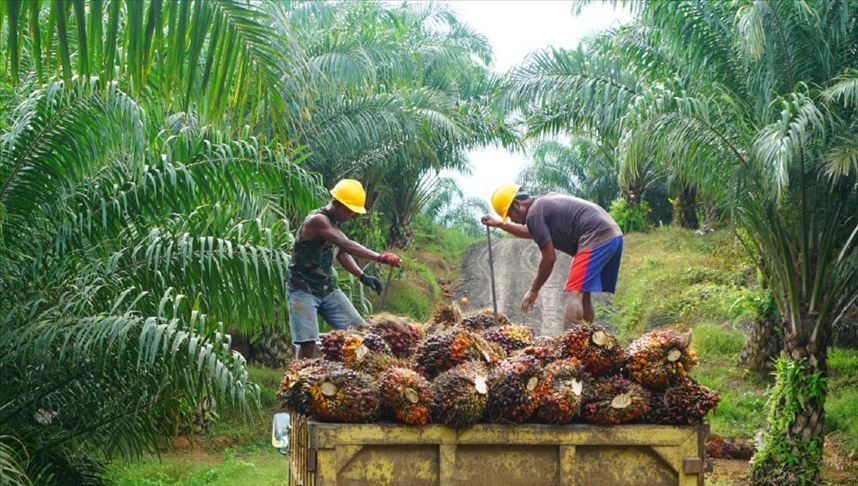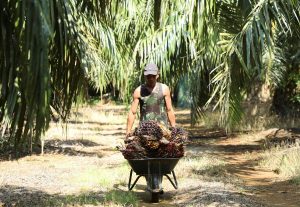Malaysian palm oil planters are letting thousands of tonnes of fruits rot as the third year of a worker shortage has left companies unable to increase their harvesting during the peak production season.
Palm oil output in Malaysia, the world’s second-largest producer, is forecast to decline, or at best remain unchanged, from last year’s 18.1 million tonnes, according to planters and analysts.
Plantations across the Southeast Asian nation are facing their worst labour crisis since the industry began in 1917, with the arrival of migrant workers that are the core of the industry’s labour force at a “snail’s pace,” the Malaysian Palm Oil Association’s (MPOA) Chief Executive Joseph Tek, told Reuters, despite the lifting of coronavirus-related hiring restrictions.
A lack of skilled harvesters means companies cannot fully capitalize on the peak harvest season that spans from August to November, forgoing a boost of growth from recent rains.
“The plantation industry is no longer at the breaking point, it has been pushed beyond the breaking point,” Tek said.
Production shortfalls in Malaysia will support prices for benchmark crude palm oil futures FCPOc3, the most-traded vegetable oil in the world, which have lost half their value after hitting a record in March.
Travel restrictions enacted in 2020 to fight the COVID-19 pandemic left the Malaysian palm oil industry short of 120,000 foreign workers needed to maintain trees and harvest fruit bunches.
After that, oil palm yields plummeted to near 40-year lows in the 2020/21 marketing year, adding to a broader global edible oil shortage triggered by the Russia-Ukraine war. That pushed palm oil prices to record highs in March, inflating prices of foodstuffs, detergent and other palm oil-based products.
Since then though, palm oil prices have slid lower following the resumption of exports from rival Indonesia, the world’s biggest palm oil producer, and a rebound in world oilseed production, with estimates of all-time high soybean output in the United States and Brazil. GRA/ Chicago soybean oil BOc1 has fallen 25 percent since hitting its all-time peak in April.
Slow Return of Workers
Malaysia’s palm industry expected their labour woes to ease after the government lifted the COVID-19 freeze on recruitment in February, with the MPOA expecting the entry of 52,000 migrant workers. However, only several hundred workers have arrived, largely because of slow government approvals and concerns over worker protections.
The MPOA estimates only 12 percent of approvals for migrant workers granted to companies across all industry sectors in Malaysia have successfully translated into boots on the ground. Migrants, mainly from Indonesia and Bangladesh, make up around 80 percent of the workforce in Malaysian estates.
Malaysia’s Ministry of Human Resources, which is responsible for approving the intake of foreign workers, did not immediately respond to Reuters queries for a comment on the labour crunch. Messages sent to the Minister of Human Resources Saravanan Murugan were not replied to as well.
FGV Holdings, the world’s largest crude palm oil producing firm, said it has received 647 migrant workers this year and it has only filled 62 percent of its required workforce.
The firm is optimistic it will receive 7,000 workers by the end of the year, FGV said in a stock exchange filing on Aug. 30. However, any incoming workers will miss the crucial high crop season.
As harvesting time at some plantations extends to as much as 90 days from the usual 10 to 15, producers are losing up to a quarter of their crops, the MPOA said. It estimates opportunity losses from unrealized crop and palm products could exceed 20 billion ringgit ($4.44 billion) by the end of the year.
This article was published in thejakartapost.com with the title “Labour shortages set up Malaysia for third year of palm oil losses”. Click to read: https://www.thejakartapost.com/business/2022/09/08/labour-shortages-set-up-malaysia-for-third-year-of-palm-oil-losses.html.
Download The Jakarta Post app for easier and faster news access:
Android: http://bit.ly/tjp-android
iOS: http://bit.ly/tjp-ios





